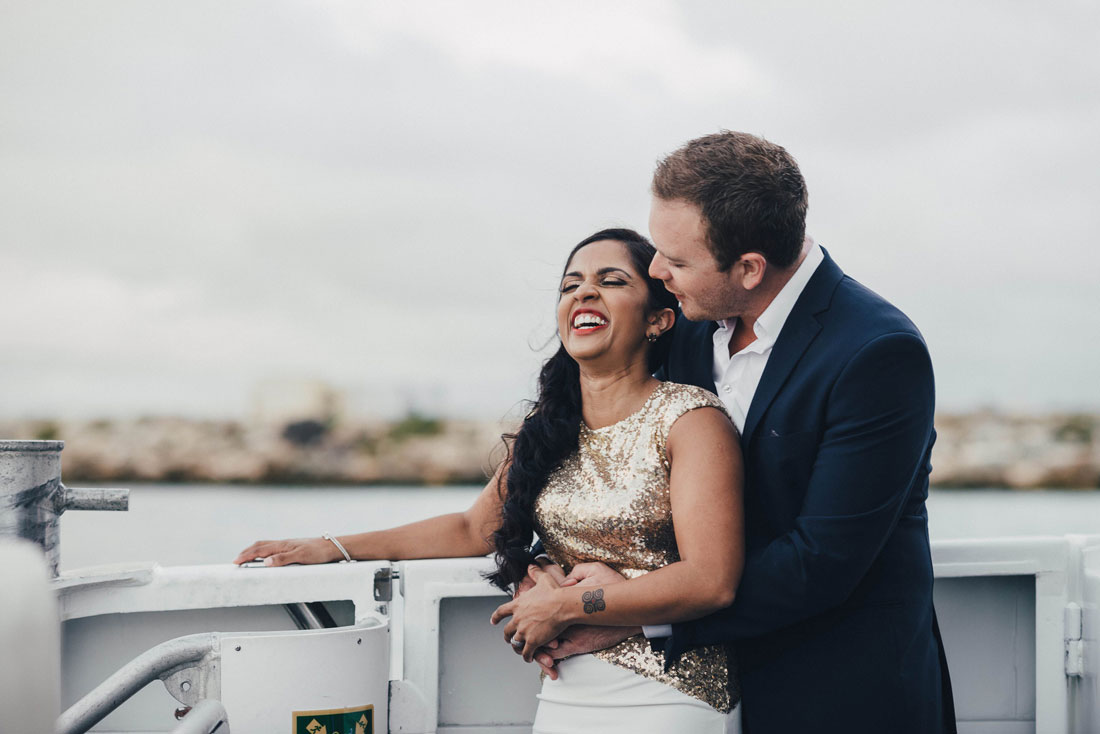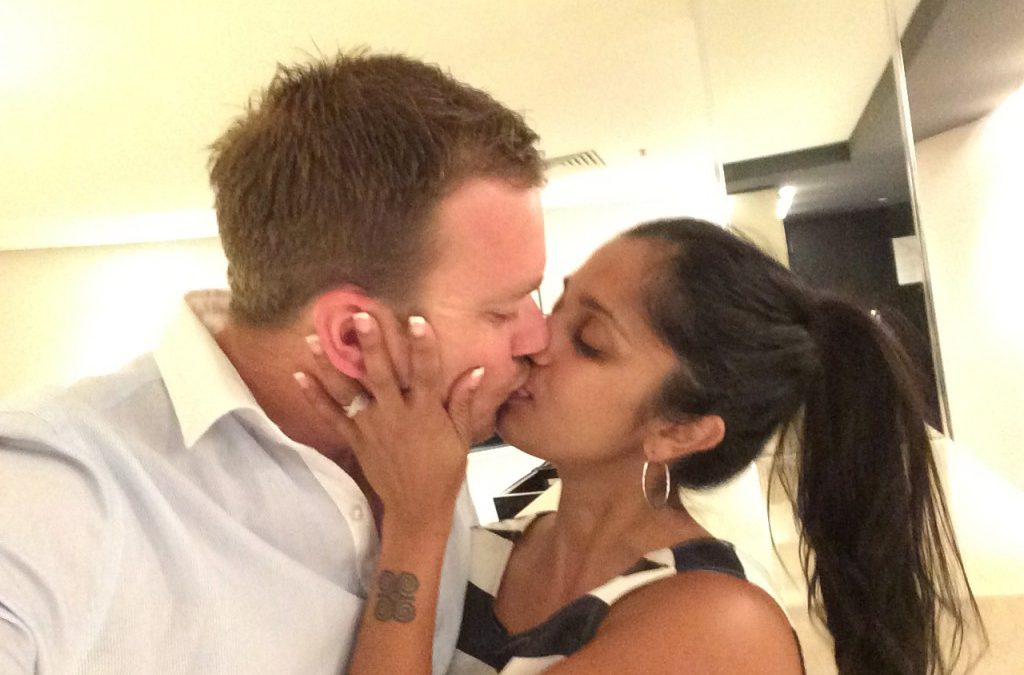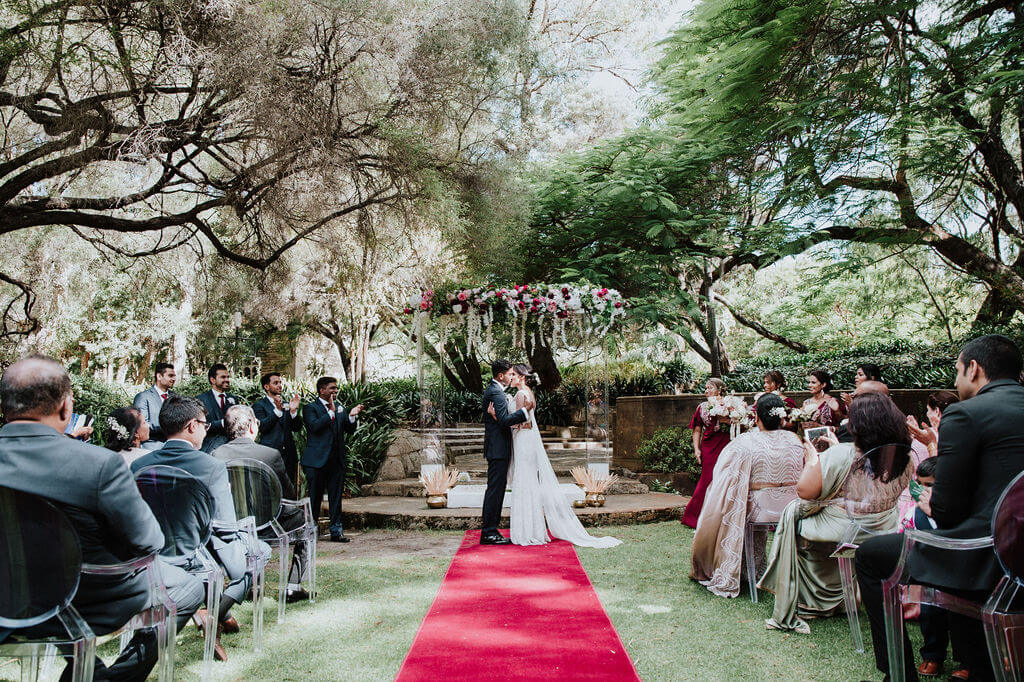
Culture in Ceremonies; Honouring your background
I am a proud Sri Lankan – Australian, woman of colour.
I say that statement with so much conviction now but as I sit here typing, I know without any doubt that it has taken me years to get comfortable with the fact that at times:
I
am
the
minority.
I know there are days where I am still coming to grips with this truth.
I remember as a child desperately trying to blend in and hoping that no one noticed, commented or picked on the things that were different about me. I had this Sinhalese culture that I was encouraged to identify with but which I almost ignored and didn’t see the value in embracing.
I didn’t want to dress in sari … what would the kids at school think?
I didn’t want to take rice and curry for lunch, I saw someone getting bullied for that.
I didn’t want to learn Sinhalese … what for? English is the universal language, right?
I didn’t want to invite friends over to my house with all its ethnicity on display … they would think I was weird.
Growing up, all these sentiments and more used to swirl around in my head. And I guarantee you, if you asked any person of colour who grew up living in a western country, they would say they experienced similar moments on many an occasion.
In short, I was embarrassed by where I came from (a fact that TRULY hurts and mortifies me to admit now), I was scared of being different and I just wanted desperately to fit in, at any cost, it would seem. Such is the way of being an immigrant.
And then I grew up.
Then I realised that this culture I had kept at arms-length for so long, was in me, it WAS me. I couldn’t escape it if I tried. And … I really don’t want to.
Becoming an adult made me realise there was more to the world I had built and that involved being a Sri Lankan.
I suddenly found myself craving to know more about Sri Lanka and its people. I found myself annoyed that my parents never taught me Sinhalese (bless them, they did the best they could with a daughter like me – the occasional brat who would probably have refused anyway). I found myself wanting to know more about the rituals that my parents and their ancestors practised.
For example, the way we Sinhalese folk love the heck out of kirribath (literal translation =milk rice). It’s a humble dish made with rice and coconut milk and we always whip it out at special occasions or to make joyful beginnings. It’s a symbol of prosperity. I cannot remember a single occasion where we haven’t eaten kirribath together. My very non-Sri Lankan husband makes it better than I do. It’s become a household staple.
But what about the Sri Lankan people themselves?
What about the Country? No, we are not Indian. Butter chicken isn’t our national dish (it’s not even India’s for that matter). We are a separate country, with a lot of similarities, of course, the most obvious being the colour of our skin. But … we are NOT all the same and hopefully, that’s something that gets recognised more and more in years to come.
The Sri Lankan culture is influenced by Buddhism, Hinduism, Catholicism and Islam. It’s a country populated by over 21 million souls and ritual is very much at the core of what binds us.
But I digress. And by now you are probably thinking, what in the actual HECK does this have to do with being a marriage celebrant Dilhari? This ain’t no David Attenborough special. Well … let me tell you.
Becoming a marriage celebrant, you quickly get thrust into this world of tradition and ritual and you get to see the most amazing things. True … some of it can seem a little outdated and at times, people want these traditions to be included but can often have no idea what they mean or why they want it.
Speaking personally, when a couple asks me to include a cultural tradition, I research the heck out of it. I want to know everything about it so that when I get to speak to it during a ceremony, I know my shit. I know why we are doing it, I know how to get my linguistics on if needed and I know what it means to my couple and/or their families. That’s all part of being part of my couples’ story.
So … here I was back in February, about to officiate at my first Sri Lankan wedding. Now, I have watched a fair few of these over the years. Generally, I’d be the younger person trying not to fall asleep, as I said earlier, being completely oblivious to the cultural significance around me.

Officiating at my first Sri Lankan wedding!
But this was different. This was adult me. Adult me who was about to perform a wedding in front of approximately 200 people, some of whom used to call the same tiny island home and I knew nothing about what this ceremony entailed. So …. I read and I read and I asked question after question and luckily, my Bride’s mother was so detailed and determined to ensure I knew what was happening as well she provided me with the most excellent cheat sheet.
In a nutshell, a Sri Lankan wedding ceremony centres around a ritual called a Poruwa ceremony which has Buddhist sentiments.
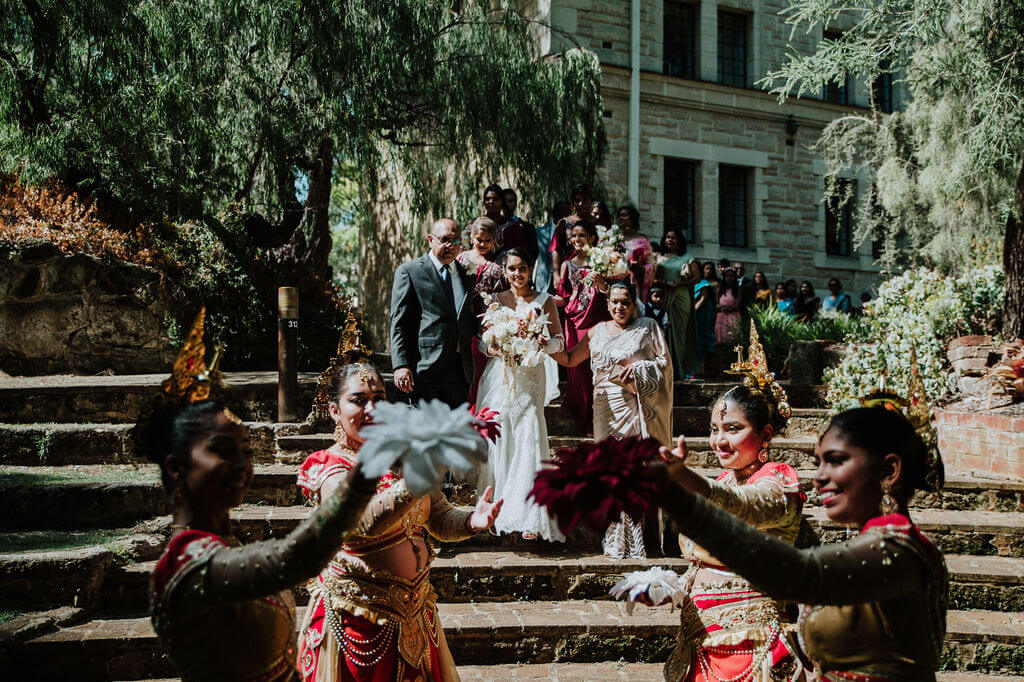
Bride entering the ceremony space
It’s involved but to keep it concise, this is what B & S’s moment called for:
1. The poruwa is the decorated platform that the ceremony takes place on which represents the
house that the couple will share and is symbolic for their marriage and their new life;
2. The couple were guided onto the Poruwa by their fathers

Stepping onto the poruwa
3. The couple were offered betel leaves as an offering to the gods which were then dropped onto the Poruwa seven times to honour seven generations of relatives on either side;
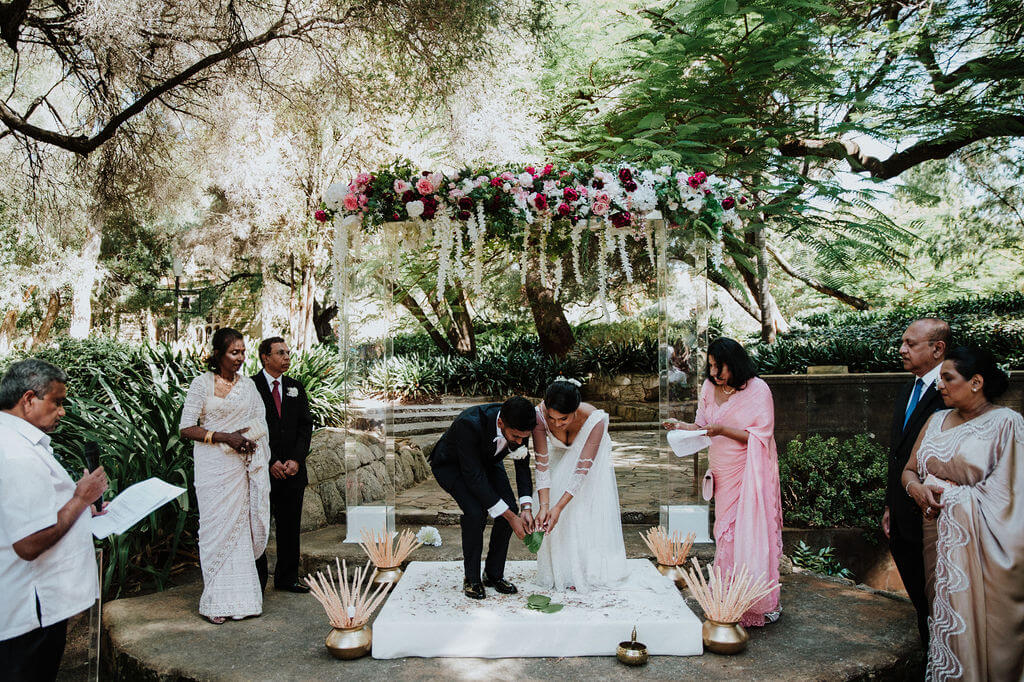
Dropping those betel leaves
4. The couple exchanged rings followed by B gifting a necklace to S to symbolise a promise to protect and care for her;
5. S’s uncle tied the pinky fingers of the couple with a blessed thread (pirith nool) to symbolise their union of marriage;
6. S’s father poured water over the bound fingers – water and earth being eternal; the water poured and the earth on which it falls being the lasting witnesses to the marriage;

Bound with a blessed thread
7. S’s mother offered kirribath to the couple and B’s mother offered a glass of milk as a symbol of prosperity – these elements signify that the couple start their new life together with the blessings of their mothers;
8. S’s friends sang a traditional Buddhist chant (the Jayamangala Gatha) that depicted stories of wisdom and compassion as a blessing to the couple;
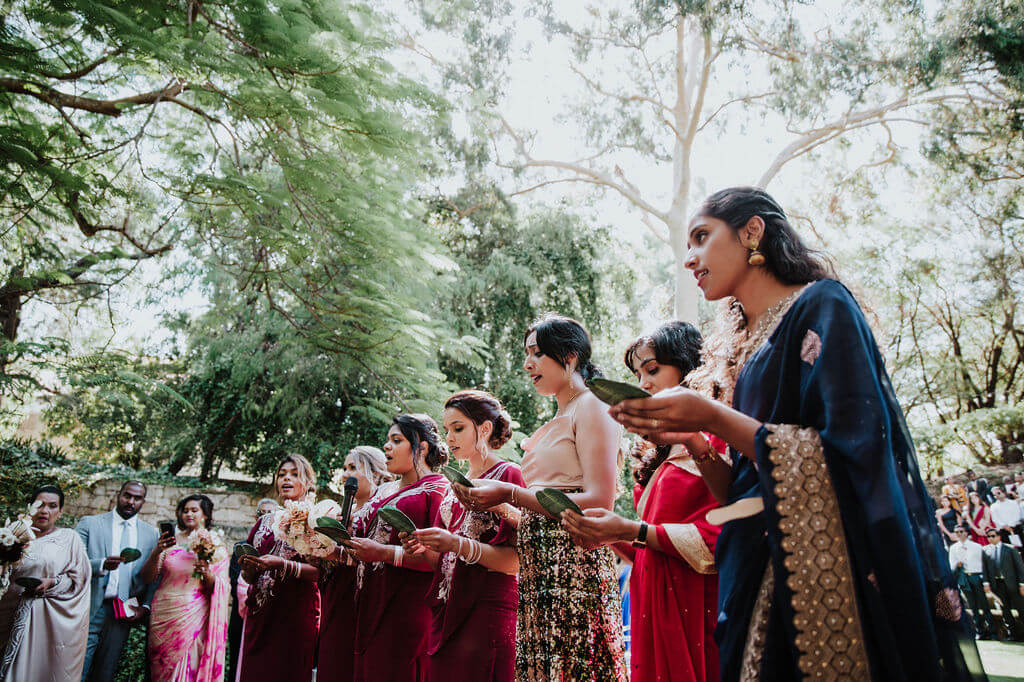
Friends singing the Jayamangala Gatha
9. The fathers led the couple down from the Porwua;
10. The couple then lit the traditional Sri Lankan oil lamp; light being a symbol of wisdom and to signify the start of a bright new future together.
I stood there at UWA, absolutely mesmerised by what I saw and now finally, a fully-grown woman, able to appreciate the magnitude of the tiny steps taken. It’s not every day that you have those aha moments. Moments where you realise you just watched something that will change you. And it did.
I did the civil ceremony after the Poruwa and it was brilliant (if I do say so myself) but was more powerful because of all the ritual before it and the fact that watching it now as a #sortofadult, I appreciated and understood it and could marvel at the messages those rituals conveyed.
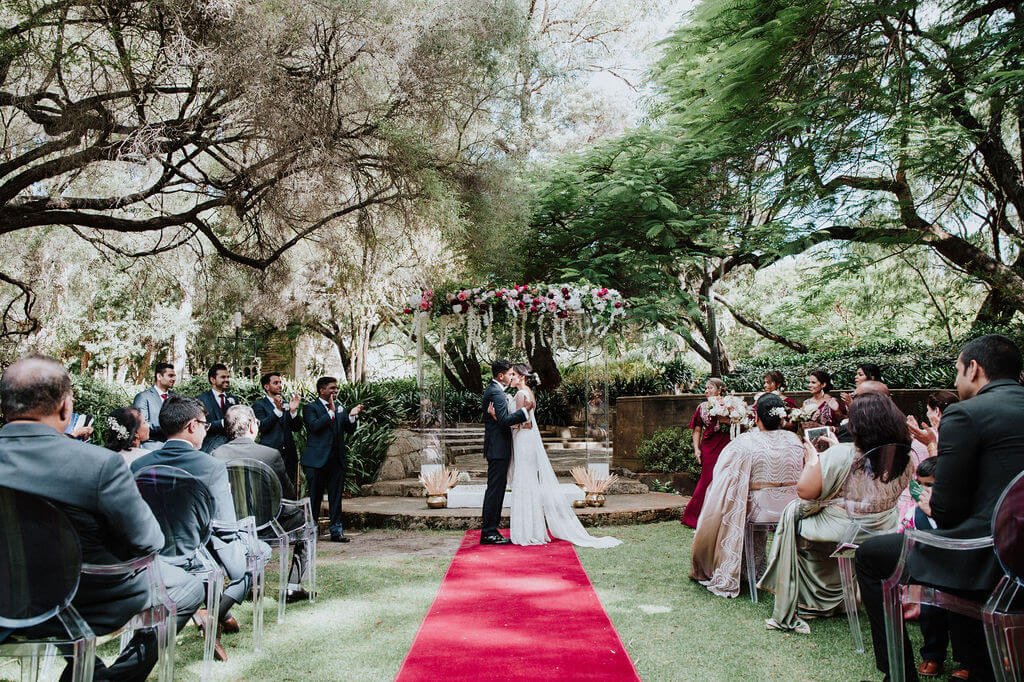
That kiss – marking the end of the civil ceremony
And as the couple walked back down the aisle to the love and fantastic adulation of their tribe, I looked around at all the many faces, both familiar and unknown, and I finally felt like I had found this connection to something that I had unknowingly been searching for…for a very long time.
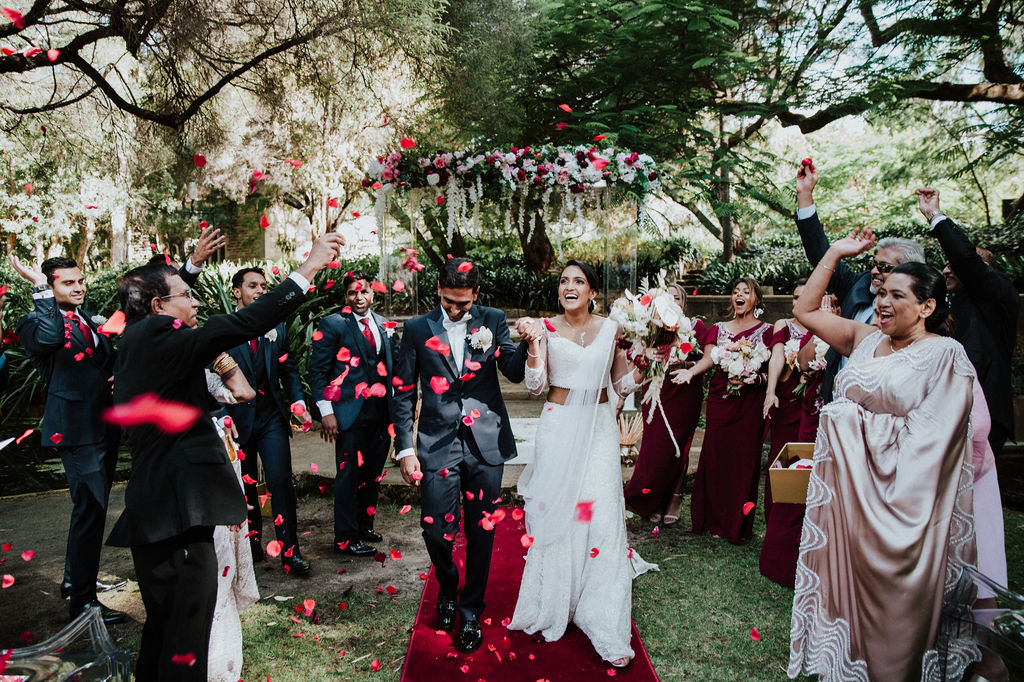
This is what JOY looks like
**Many thanks to my amazing couple B & S for giving me the privilege of being part of your moment and for letting me use these amazing pictures by Magnum Chin (Other wonderful vendors featured include Wedstyle, UWA (University of Western Australia), A Little Bohemia, and Dolce Ensembles.



